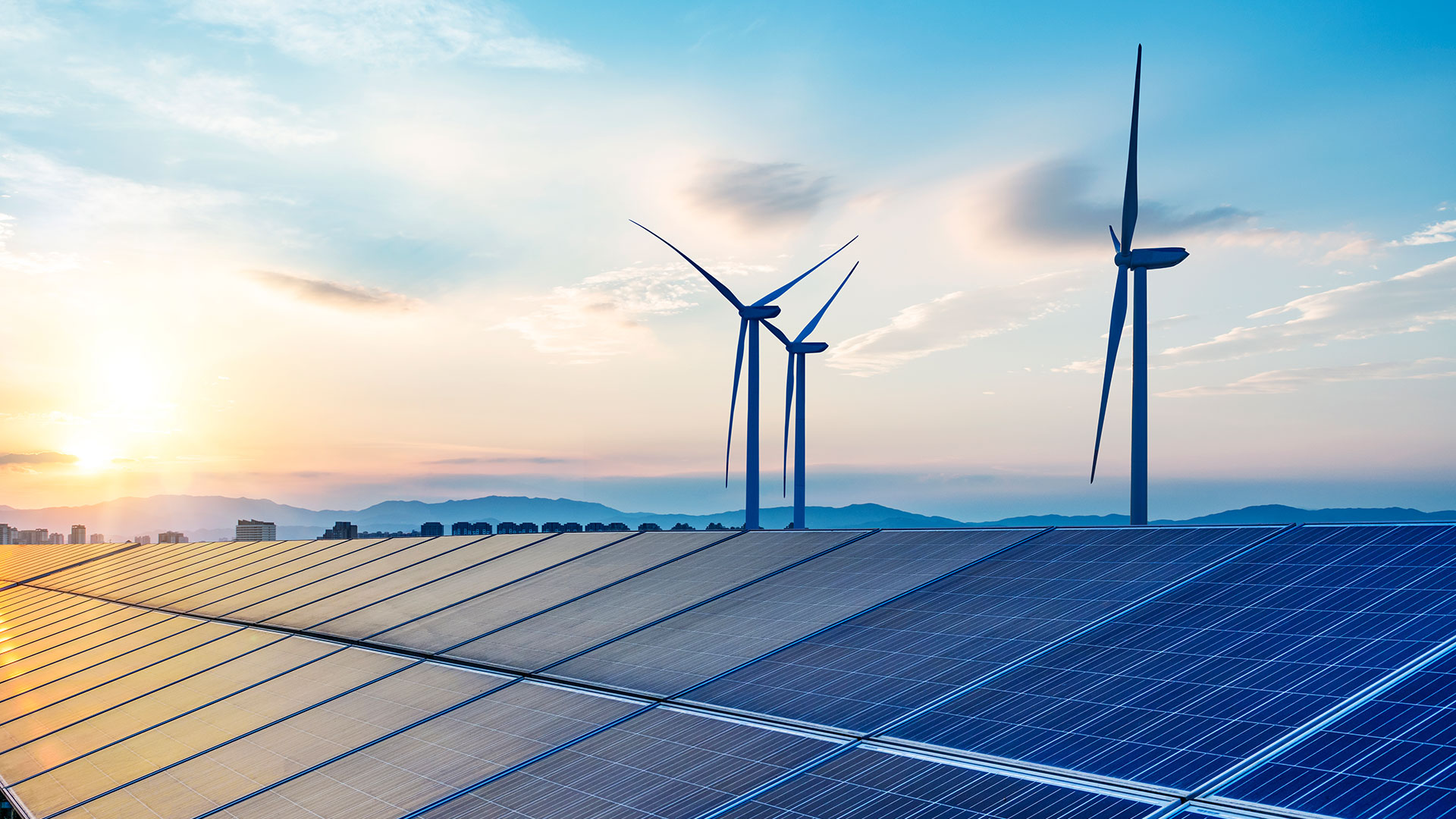What is the German Energiewende?
The German energy transition, known in Germany as the Energiewende, is a long-term energy and climate strategy to move Germany towards a climate-neutral energy system by 2045. It is a large-scale economic and ecological project motivated by scientific insights and ethical considerations with far-reaching economic and societal impacts.

The German Energiewende: A long-term strategy to reach climate neutrality by 2045
The commitment to Germany’s Energiewende (to reach net-zero greenhouse gas emissions by 2045) is laid out in the Climate Change Act, which also states intermediary emission reduction targets for 2030 (reduction by 65% against 1990 levels) and 2040 (reduction by at least 88%). From 2050 onward, Germany aims to have a negative emissions balance, meaning that it would use natural sinks, such as trees or soil, to remove more greenhouse gases than it emits. In the first Climate Change Act (from 2019), the net-zero commitment was originally set for 2050. In 2021, however, it was amended and moved up 5 years after Germany’s Constitutional Court declared the German Climate Change Act as partly unconstitutional because it shifted the burden of greenhouse gas emissions to future generations (refer to Question 6 for more).
The Climate Change Act lays down specific economy-wide annual reduction targets as well as medium- and long-term targets in all sectors of the economy – energy, buildings, transport, industry, and agriculture. Emission trends are closely monitored and measured against postulated climate goals, which leads to regular revisions of policies and targets. Every two years, the Council of Experts for Climate Matters presents a report, which examines greenhouse gas emissions trends, assesses governmental action, and proposes additional measures to close the ambition or implementation gap.
As of 2021, Germany had fallen behind on its climate target, with an emission reduction of only 38% below 1990 levels, in comparison to the goal of minus 40% set for 2020. In 2021, to put the country back on track, the federal government approved an immediate action programme worth eight billion euros to intensify support for the decarbonisation of the industrial sector, the development of renewable hydrogen, energy-focused building refurbishment, climate-friendly mobility, and sustainable forestry and agriculture. In 2021, the emissions from the building and transport sector continued to exceed the annual emission levels permitted under the Climate Change Act, which made the formulation of emergency programmes for these sectors mandatory under the law (§ 8 Climate Change Act). However, the German Expert Council of Climate Issues concluded in 2022 that while the proposed emergency programme for the building sector will at least make a substantial contribution to reducing emissions, the Immediate Action Program for the transport sector does not even meet the necessary requirements of an emergency programme. Additional measures need to be introduced and taken to bring Germany closer to its climate goals.
A fundamental transformation of Germany’s energy system from fossil fuels and nuclear power to renewable energy
To reach climate neutrality by 2045, Germany needs to phase out fossil fuels from its energy mix, accelerate the deployment of renewable energies and reduce its overall energy consumption. In 2021, renewable energy covered 18% of the overall primary energy consumption (against only 1% in 1990). This development, while substantial, also shows how radically quicker the transformation must happen to reach climate neutrality by 2045. Most progress has been made in the power sector, where the development of renewables has been very substantial, covering 42% of today’s power demand (against 3% in 1990). Now, the other sectors need to follow suit. Additionally, due to strong public opposition to nuclear power, all nuclear power plants are planned to be shut down by the end of 2022, putting even more emphasis on the expansion of renewable energy in Germany. Recently, the German government raised the renewable energy target in the power sector to a share of 80% in 2030.
The transformation of the power sector (responsible for about a third of all greenhouse gas emissions in Germany) is at the core of the Energiewende. While energy efficiency measures will be key to lowering transition costs and energy infrastructure needs, the importance of low-carbon electricity will increase during the transition. Indeed, in many applications, such as road passenger transport, low-temperature heating, cooling, and water heating, the use of renewable electricity has proven to be the most efficient way to decarbonize the energy system.
Renewable hydrogen, produced locally or imported, will also play an important role in achieving net-zero emissions (refer to Question 4 for more). It will be used as a fuel in sectors that are difficult to electrify (especially in shipping and some industrial sectors such as the steel sector) and as feedstock for some industrial processes (especially in the chemical industry). Last but not least, a successful energy transition will require improvements to energy efficiency. Indeed, efficient use of electricity, heat, and fuels simultaneously reduces overall energy consumption, greenhouse gas emissions, and energy bills.
Last revision on .
